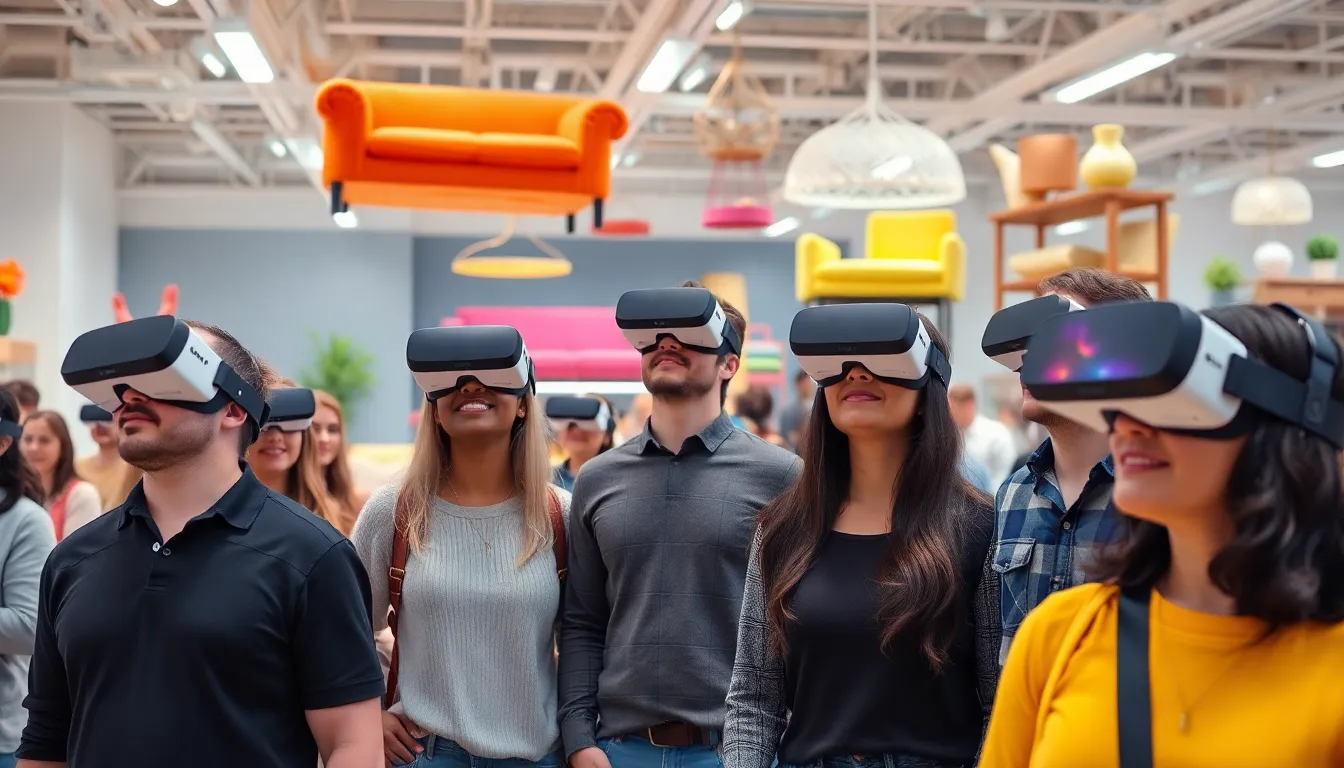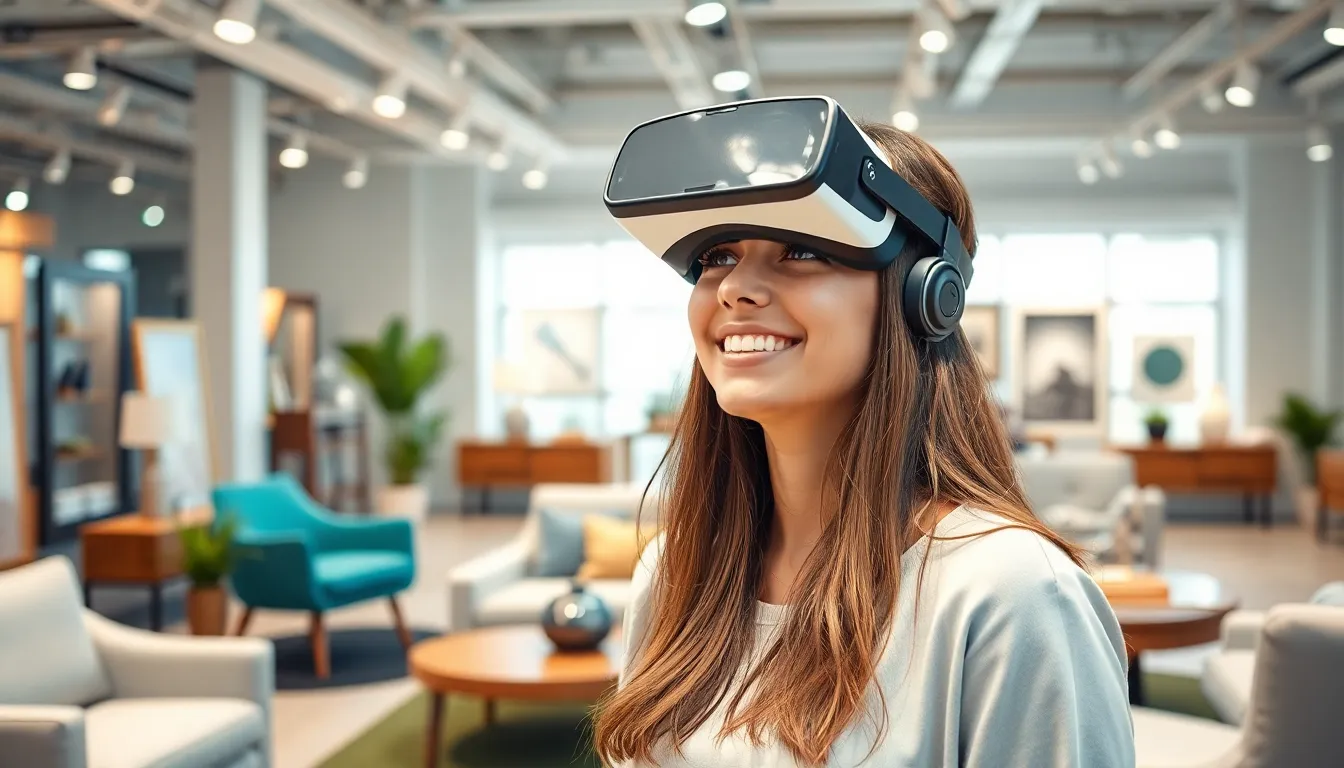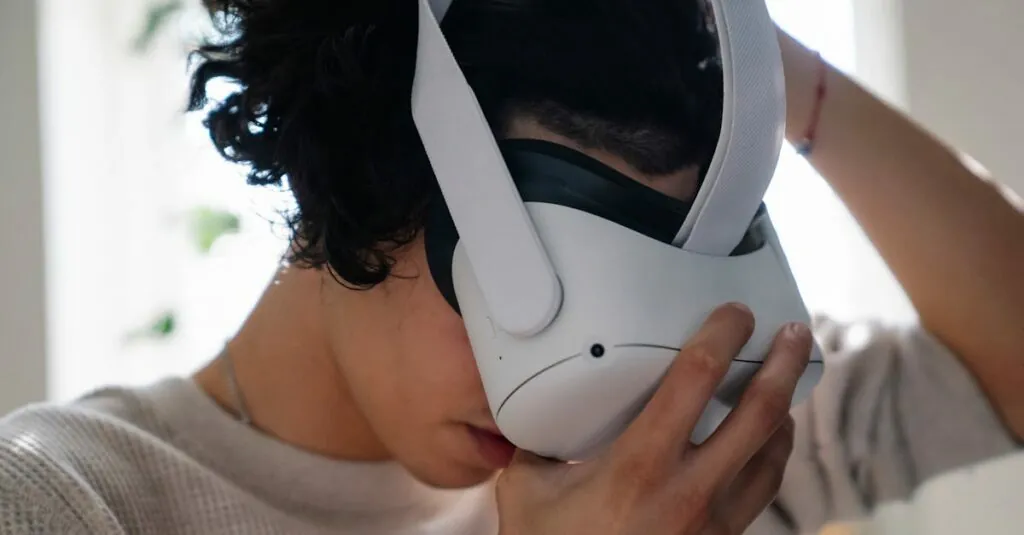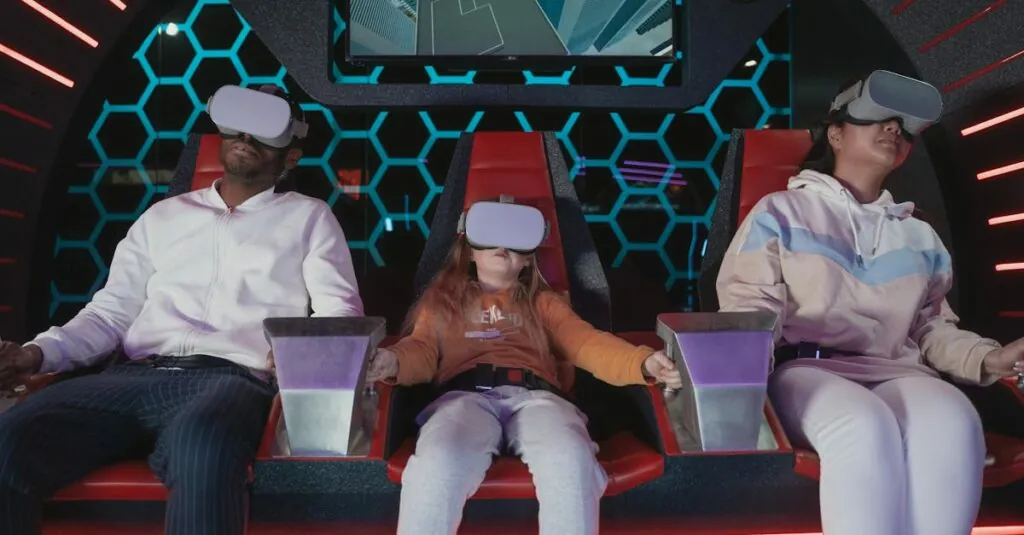Imagine stepping into a store where the clothes try themselves on for you, or where you can stroll through a virtual mall in your pajamas. Welcome to the brave new world of virtual reality in the retail industry. This technology isn’t just a gimmick; it’s transforming how shoppers experience brands, making the mundane act of shopping feel like an adventure.
Table of Contents
ToggleOverview of Virtual Reality in Retail Industry
Virtual reality (VR) transforms how consumers interact with products. Retailers adopt VR technology to enhance customer engagement and streamline the shopping process. Virtual showrooms allow customers to explore products in immersive environments without physical limitations. Shoppers experience real-time interactions with items, driving informed purchasing decisions.
Studies show that VR can increase customer retention rates. Approximately 70% of consumers report higher satisfaction levels when engaging with products in virtual spaces. While browsing, users can visualize how items fit into their lives, creating a more personalized shopping experience.
Retailers utilize VR to showcase their merchandise effectively. These experiences lead to a deeper emotional connection with the brand. Training employees in VR environments improves service quality, as simulated scenarios provide crucial hands-on experience.
Brands like IKEA and Lowe’s use VR solutions for home design and product visualization. Shoppers can visualize furniture in their living spaces before making a purchase. Virtual reality makes it easier to experiment with different styles and arrangements, improving customer confidence in their choices.
Promotions in virtual environments offer unique opportunities. Limited-time offers or exclusive product launches engage customers and create urgency. Immersive experiences keep consumers informed and entertained.
Virtual reality in retail elevates the shopping journey. This technology makes the process more interactive and enjoyable. Businesses that integrate VR effectively stand to benefit from improved customer satisfaction and enhanced sales performance.
Benefits of Virtual Reality in Retail



Virtual reality offers numerous advantages in the retail sector that enhance shopping for customers and drive business success. Specifically, it enriches customer interactions and boosts brand engagement.
Enhanced Customer Experience
Enhanced customer experience through virtual reality transforms how consumers shop. Shoppers can visualize products in realistic environments, making decisions simpler. By immersing themselves in a virtual store, customers experience deeper interactions with items. Retailers like IKEA provide VR experiences that allow potential buyers to see how furniture appears in their homes. Such visualization promotes informed choices, reducing returns significantly. Feedback shows that around 70% of consumers express higher satisfaction when they can engage with products in a virtual space. Consequently, this innovative shopping approach fosters loyalty and strengthens relationships with brands.
Increased Engagement
Increased engagement happens naturally in virtual environments. Brands capture consumer attention through interactive experiences, making shopping a memorable event. Virtual reality installations promote engagement by inviting customers to explore products or collections interactively. Promotional events and contests in these spaces stimulate excitement and urgency among shoppers. Research indicates that customers participating in VR experiences are more likely to share their positive experiences on social media. As a result, this word-of-mouth marketing amplifies brand visibility and attracts new customers. Engaging shoppers in immersive ways contributes to higher sales and fosters a community around the brand.
Applications of Virtual Reality in Retail
Virtual reality (VR) transforms the retail landscape with diverse applications that enhance the shopping experience. Two notable areas are virtual try-ons and immersive store experiences.
Virtual Try-Ons
Virtual try-ons enable customers to experience products in a simulated environment. Shoppers can see how clothing, accessories, or beauty products look on them without physical contact. This technology reduces uncertainty and promotes confident purchasing decisions. Retailers like Sephora and Warby Parker harness VR to allow consumers to test makeup products and eyewear virtually. Approximately 70% of consumers feel more satisfied with their purchases when using these features. Additionally, virtual try-ons significantly decrease return rates by providing a clearer understanding of products before purchase. This interactive approach fosters loyalty and increases overall customer satisfaction.
Immersive Store Experiences
Immersive store experiences draw customers into engaging virtual environments. Brands create simulated shopping scenarios that replicate or enhance physical stores. For instance, retailers like Nike offer VR experiences that highlight product features and allow for interaction with items in a virtual space. Shoppers can explore collections and receive personalized recommendations tailored to their preferences. Engaging with products in these immersive settings enhances brand connectivity and customer retention. Research indicates that about 60% of consumers who experience VR encounters in retail are more likely to visit a physical store. This innovative approach strengthens the emotional connection between brands and customers while offering a unique shopping experience.
Challenges of Implementing Virtual Reality in Retail
Virtual reality in retail presents various challenges that retailers must navigate effectively. Key obstacles include technology barriers and cost considerations, both crucial for successful implementation.
Technology Barriers
Implementing virtual reality requires advanced hardware and software. Many retail businesses face difficulties in integrating these technologies seamlessly into existing systems. Limited technical knowledge among staff can hinder effective use of VR tools. Compatibility issues with devices may arise, causing inconsistent user experiences. Additionally, physical space constraints play a role, as dedicated areas are often needed for immersive VR experiences. Retailers must ensure they provide the necessary training and resources to overcome these hurdles and maximize VR’s potential.
Cost Considerations
High costs associated with virtual reality adoption present a significant challenge for retailers. Initial investments in VR technology can be substantial, considering the costs of hardware, software development, and content creation. Ongoing maintenance expenses add to the overall financial burden. Budget constraints may prevent smaller retailers from utilizing VR effectively. Additionally, the return on investment may not be immediately apparent, leading to hesitation in allocating resources. Retailers should carefully evaluate long-term benefits alongside upfront costs to make informed decisions about VR integration.
Future Trends in Virtual Reality for Retail
Emerging trends in virtual reality (VR) are reshaping the retail landscape significantly. Personalization stands out as a critical aspect, as retailers increasingly leverage VR to offer tailored shopping experiences that cater to individual preferences. Enhanced analytics will also allow businesses to gather data from virtual shopping interactions, optimizing inventory and marketing strategies based on consumer behavior.
Increased integration of augmented reality (AR) with VR provides immersive environments for consumers. Companies will soon implement AR features that overlay digital content onto physical products, enabling customers to interact more naturally. Such advancements lead to deeper emotional connections between brands and shoppers.
The evolution of social commerce through VR creates shared experiences. Consumers may soon engage in virtual shopping events with friends, enhancing social connections while shopping. Real-time product trials during these events encourage immediate purchases, driving sales.
Sustainability is another trend driving VR innovation. Retailers prioritize eco-friendly practices by offering virtual experiences that reduce the need for physical products. By simulating product use virtually, businesses can decrease return rates and minimize waste.
Cost reductions are expected as technology advances. Enhanced affordability of VR systems will enable smaller retailers to adopt VR solutions. Numerous collaborations between tech companies and retailers will further streamline VR integration into existing platforms, simplifying implementation.
Investment in VR training for staff will enhance operational effectiveness. Retailers aiming to harness the full potential of VR tools recognize the value of skilled employees. Knowledgeable staff can maximize the benefits of immersive experiences, fostering customer loyalty and satisfaction.
Trends indicate that future VR applications in retail will drive personalized experiences, social shopping engagements, sustainability efforts, and impressive cost efficiency. These advancements promise to transform the retail sector, making it more interactive and consumer-centric.





